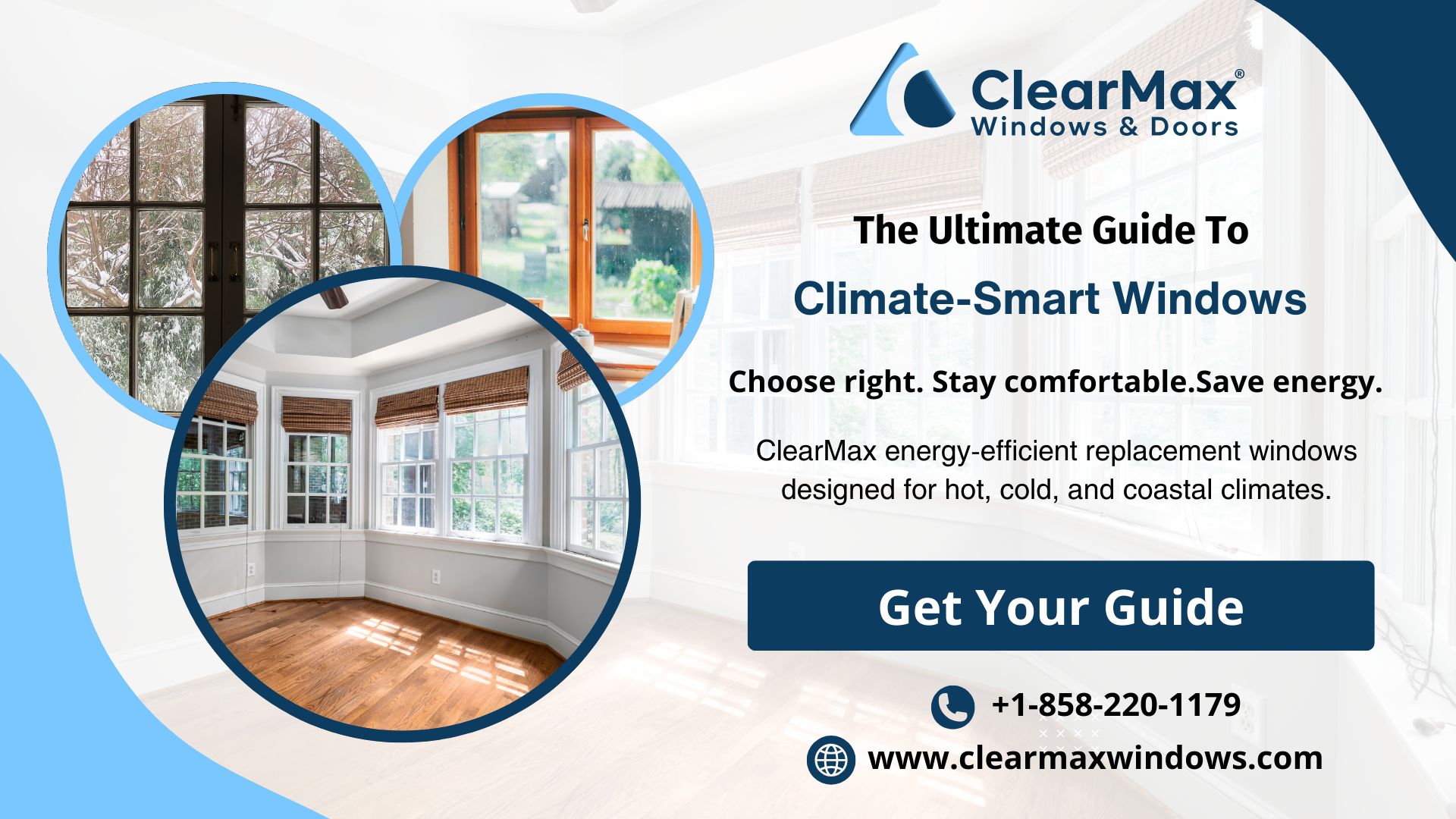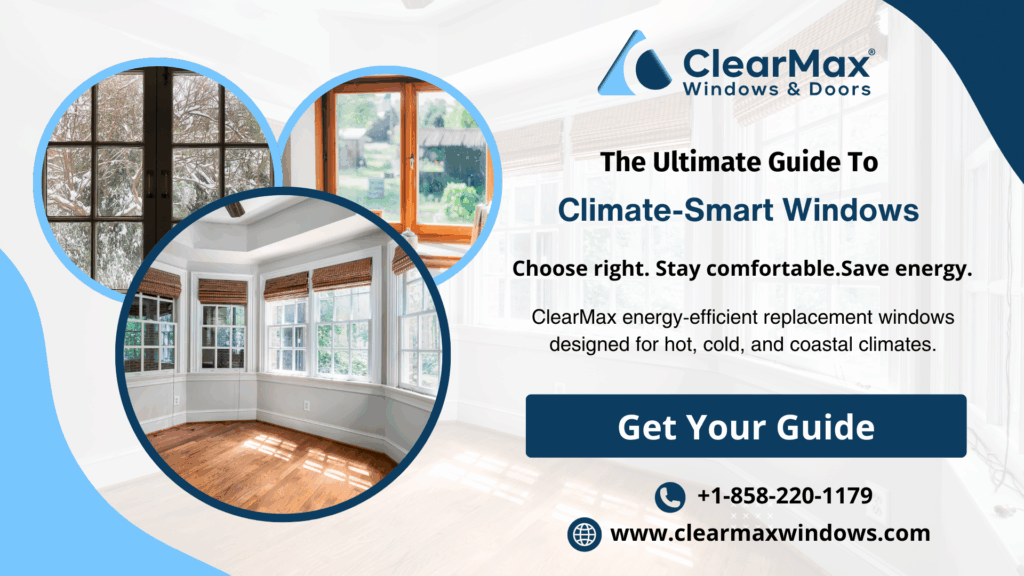The Ultimate Guide to Choose the Right Replacement Windows According to Your Climate

Substituting your old windows with new ones is not only about style; it is more than that. It also include other important elements such as comfort, energy savings, and protection of your home. Climate is one of the most overlooked factors when selecting windows, but it directly impacts the efficiency of windows. Consciously selecting a window can reduce maintenance and extend lifespan. Being one of the largest online window and door suppliers, ClearMax® helps homeowners find windows specifically designed according to their house environment.
Why Climate Matters in Window Selection?
Different climates pose different threats accordingly. Such as hot climate brings temperature higher than normal and warm air, humid environment brings increased moisture in air and excessive rains, freezing winters bring chilling cold air and snowfall, coastal climate brings salty air. If climate is not considered while selecting windows, then it results in higher utility costs, condensation, drafts, or even structural damage. Energy efficiency ratings such as U-factor and Solar Heat Gain Coefficient(SHGC) are directly related to climate. For usage in warm climates, choose windows with a low SHGC to block heat gain. For Cold climates, choose a window with a low U-factor for better insulation
Matching Windows to Different Climate Zones
Following is a breakdown suggesting which window to choose in respective climate zones:
- Hot and Dry Climates (e.g., Southern California, Arizona)
In these climatic conditions, you should prefer Low-E glass and tinted coatings to block UV rays. Also, look for window frames with thermal breaks to reduce heat transfer. - Cold and Freezing Climates (e.g., Northern States)
For such a climate, triple-pane glass and low U-factor ratings work the best. It is because it traps heat. To minimize condensation, gas-filled windows with warm edge spacers can be selected. - Coastal and Humid Areas
Corrosion-resistant frames (vinyl, fiberglass, or aluminum with thermal breaks) work best in such climate conditions. To handle storms and salty air, impact-resistant glass can be used. - Mixed and Seasonal Climates
Double-pane windows with a balanced SHGC and U-factor can be used in mixed climatic conditions. For easy cleaning and ventilation, Tilt-in or casement windows can be preferred.
Style & Function Matter Too
Climate is the key feature while looking for window but do not overlook functionality. At end, the choice remains regarding your convenience.
Two most popular type sto go for are:
-Casement windows: they seal tighter, thus providing protection against wind.
-Slider windows: they allow wild openings for hot climates with natural ventilation.
The key for a perfect choice is to blend efficiency with aesthetics to improve curb appeals nd resale value
Professional Installation – The Final Step
Even the best window fails if not installed properly. Proper sealing and flashing prevent leaks,drafts and energy loss. The best practice to have these protocols is to be done by professional.ClearMax® not only provides high-quality windows but also ensures professional guidance and installation recommendations.
Whether you’re battling scorching summers or icy winters, the right replacement window makes all the difference. Explore ClearMax®’s wide range of ENERGY STAR® certified windows online .

Choose right. Stay comfortable.Save energy.
ClearMax energy-efficient replacement windows designed for hot, cold, and coastal climates.Get Your Guide.







